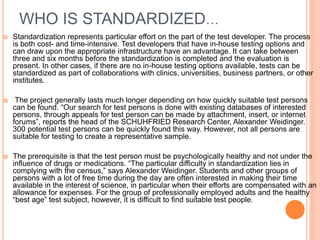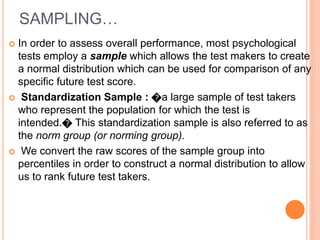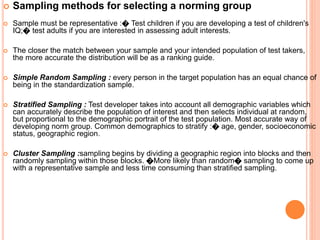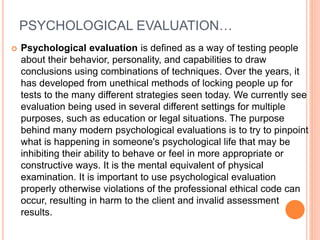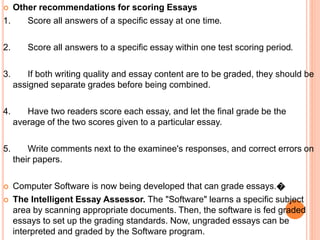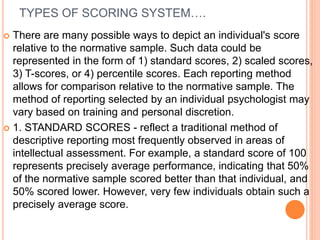Psychological test norms are based on large standardization samples that are representative of the population for which the test is intended. Tests are standardized by administering them to samples stratified on key demographics like age, gender, education level, and geographical region to create a normal distribution of scores. This allows future test takers' raw scores to be converted to percentiles for accurate comparison against the norm group. Regularly updating test norms with new standardization samples is important for interpreting scores.






